Useful links
Links to other relevant LIFE projects and websites
- LIFE MIPP

Life+ Natura project "Monitoring of insects with public participation" (MIPP) main objective is to develop and test standardized methodologies to monitor the conservation status of insects species included in the Annexes of the Habitats Directive. The species targeted by MIPP project are: Osmoderma eremita s.l., Lucanus cervus, Cerambyx cerdo, Rosalia alpina, Morimus funereus. - LIFE CARABUS
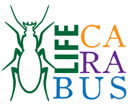
the project aims at reducing the threats of extinction for the species Carabus olymipiae by setting a specific objective through the establishment of a forestry management model able to restore habitats and attracts new funds for the species conservation. Another projects objective is to raise stakeholders awareness on the species conservation.
- LIFE WetFlyAmphibia
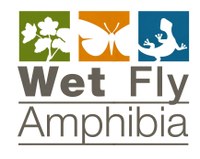
This projects, with 6 years of lifetime, is led by the National Park of Foreste Casentinesi and involves: the national Forestry Corps, D.R.E.Am Italia, the Union of the Municipalities of the Casentino Mountains, University of Bologna and University of Pavia. The project’s general objective is the conservation of amphibians and butterflies of Community interest, of their habitats (such as wetlands) within the National park.
- SEMIACQUATICLIFE

This project focuses on the creation and restoration of SemiAquaLife.jpgterrestrial wetlands and habitats for semi-aquatic fauna in a number of Natura 2000 Network sites to improve the conservation status of fauna. The project involves several species of amphibians, dragonflies and water beetles protected under the Habitats Directive and listed in Annexes II and IV.
- LIFE BRINDGING THE GAP

The objectives of this project are mainly related to the recovery of some endangered Life_bridging.jpg habitats (9070, 6530 *, 9160, 9020 and 9190); the conservation of some Annex II species in 30 Natura 2000 sites (Osmoderma eremita, Cerambyx cerdo, Lucanus cervus and Anthrenochernes stellae); the creation of habitats with decaying wood. - RIGKILDE-LIFE
LIFE14 NAT/DK/000606 - Restoration and conservation of petrifying springs (*7220), calcareous fens (*7210) and alkaline fens (7230) in Denmark. The project, born in 2015, involves areas in Denmark: it aims to save the rare and vulnerable habitats of nature called petrifying springs, alkaline fens and calcareous fens.
calcareous fens (*7210) and alkaline fens (7230) in Denmark. The project, born in 2015, involves areas in Denmark: it aims to save the rare and vulnerable habitats of nature called petrifying springs, alkaline fens and calcareous fens.
- LIFE OSMODERMA
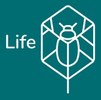 LIFE16 NAT/LT/000701 - Ecological network for Osmoderma eremita and other species dependent on veteran trees. Main goal is to create a functional ecological network for Osmoderma eremita and other species dependent on deciduous veteran trees by habitat management in core habitats for the species, development of stepping stone elements within the network area and re-establishing hermit beetle populations in restored historical habitats of the species
LIFE16 NAT/LT/000701 - Ecological network for Osmoderma eremita and other species dependent on veteran trees. Main goal is to create a functional ecological network for Osmoderma eremita and other species dependent on deciduous veteran trees by habitat management in core habitats for the species, development of stepping stone elements within the network area and re-establishing hermit beetle populations in restored historical habitats of the species - LIFE FAGUS

The main objective of the project is to ensure the long-term Life_fagus.jpgd conservation of habitats 9210 * and 9220 * in the National Parks: Cilento, Vallo di Diano and Alburni and Monti del Gran Sasso e Laga, using the development of sustainable management strategies for these habitats, increasing the levels of biological diversity for vascular plants, lichens, birds, beetles and saproxylic fungi and monitoring the habitats to assess the effects of conservation actions.
- LIFE+ TRASMOCHOS
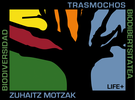
The project, concluded in 2014, focused on the ecological role of Naturaleza.jpgcapitozzati trees in the province of Gipuzkoa (Spain). The actions implemented were: restoration, maintenance and creation of capitozzati forests, research on saproxylic insects (e.g. Rosalia alpina) in order to identify new populations, increase the availability of their habitats and the purchase of 300 hectares of beech forest.
- LIFE BEETLES projects
The main long-term objective of LIFE BEETLES projects is to improve the population size, distribution area and conservation status of the wild populations of T. floresensis, P. aptinoides and T. terrabravensis. Its work will focus on increasing the quantity and quality of habitat available for the target species in order to try to reverse the population decline.
- LIFE ESC360

The project offers 360 volunteers, aged between 18 and 30 years, the opportunity to actively participate in nature conservation through the monitoring of invertebrates, amphibians, birds, mammals of Community interest, within 22 Italian sites of the Natura 2000 Network managed by the Carabinieri.
- NETWORK NAZIONALE DELLA BIODIVERSITÀ

The project is promoted by the Ministry of Environment and Territory Protection and the logoNaturaitalia.pngMare: it is a network of Centres of Excellence (CdE) and National Focal Points (FP), internationally and nationally accredited entities for the management of biodiversity data, which share data and information on biodiversity.
Other Useful Links
- European Community - LIFE Projects
European Union financial instrument LIFE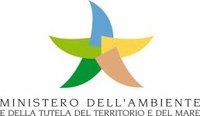
- Italian Ministry of Environment
Life projects
